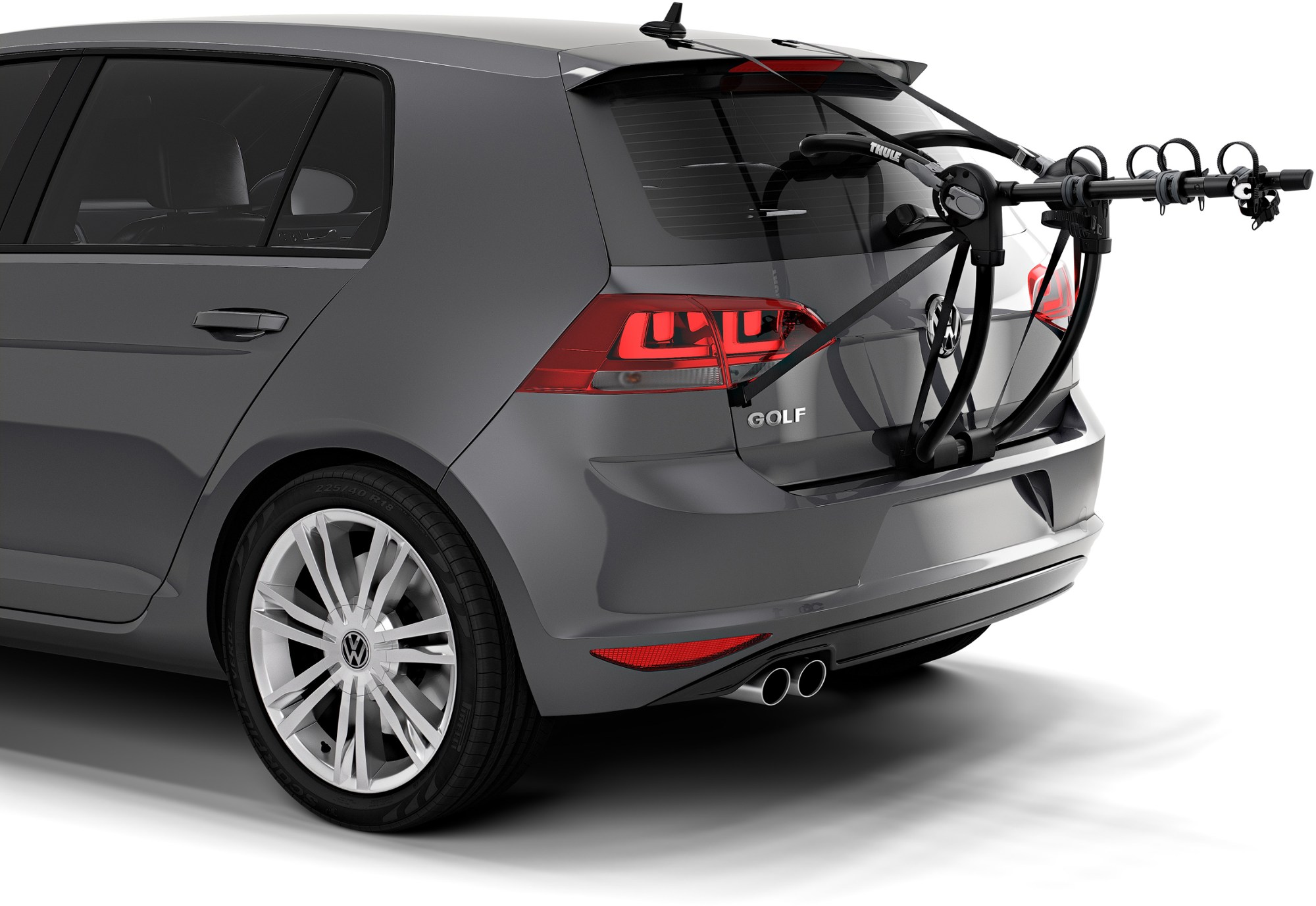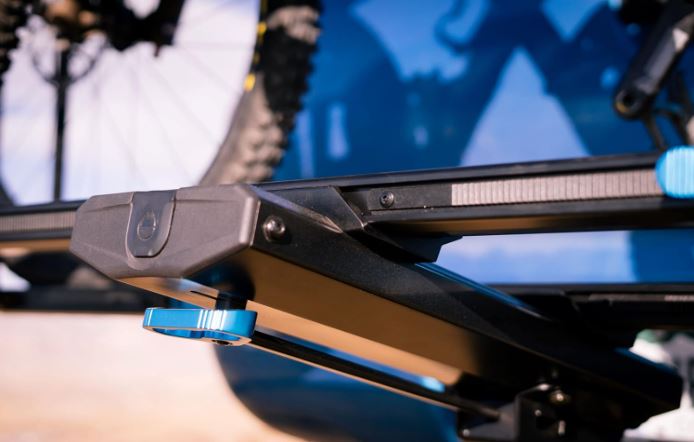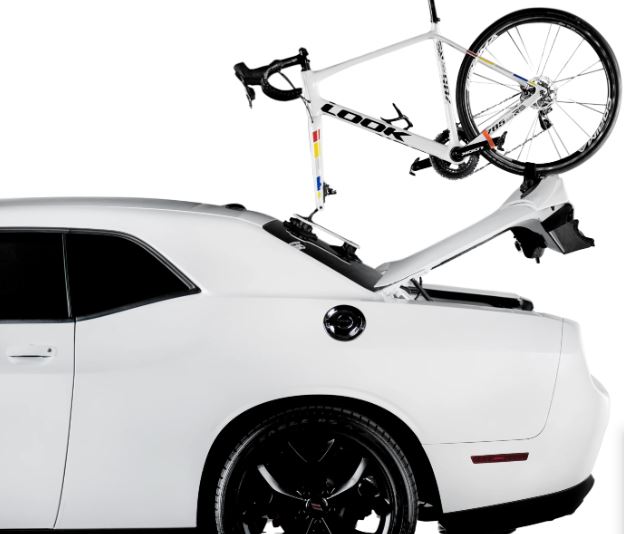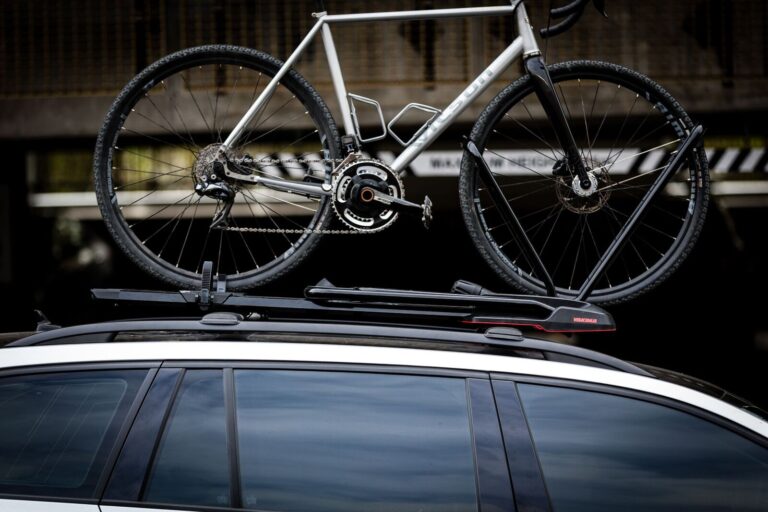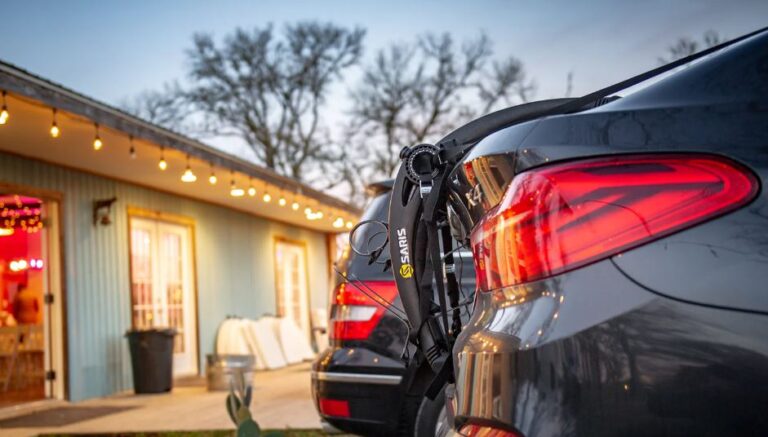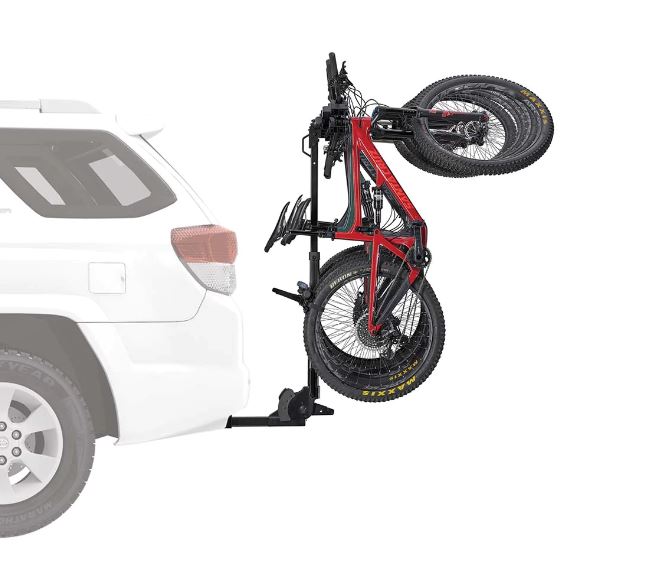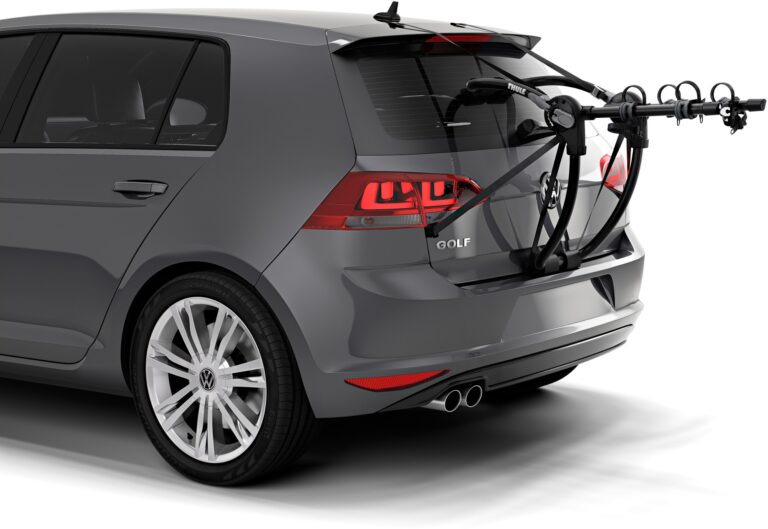Bike Rack Buyers Guide
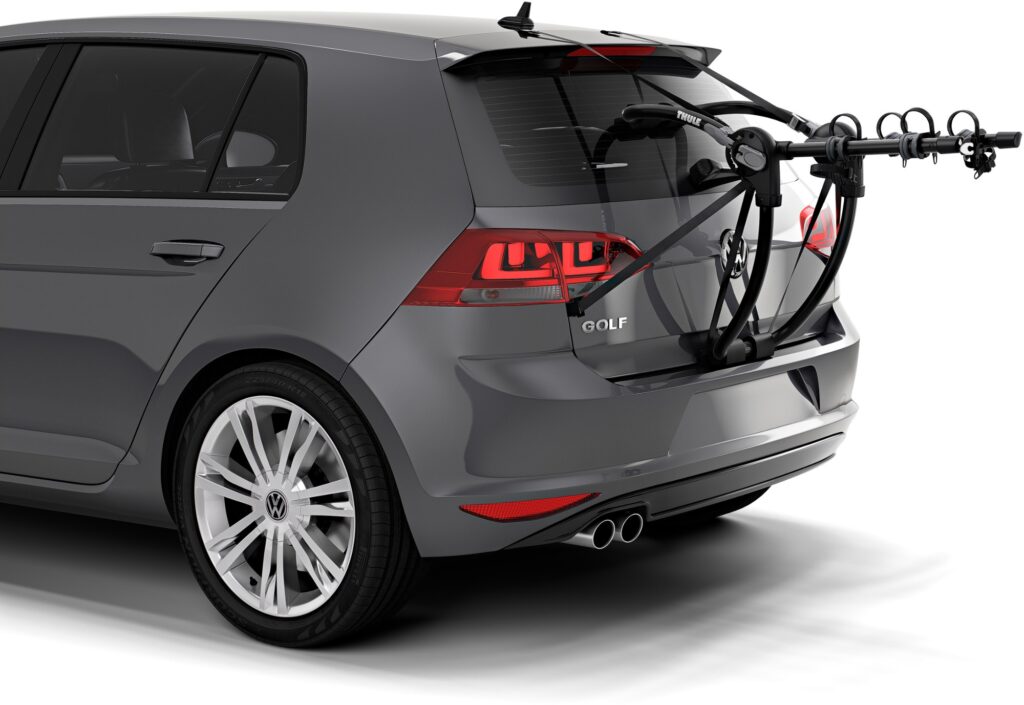
Selecting the right bike rack is essential for safely and efficiently transporting your bicycles. This Bike Rack Buyers Guide will help you understand the different types of bike racks available and what factors to consider before making your purchase.
Types of Bike Racks
Roof-Mounted Racks
- Attachment: These racks mount on the vehicle’s roof, typically using the existing roof bars or rails.
- Pros: They allow full access to the car’s trunk and are ideal for frequent users who value security and stability.
- Cons: Bikes can be challenging to load due to the height, and they increase the vehicle’s overall height and drag, potentially affecting fuel efficiency.
Hitch-Mounted Racks
- Attachment: These racks attach to the vehicle’s hitch receiver, making them a sturdy option.
- Pros: Easy to install and load, they have minimal impact on vehicle aerodynamics and often come with built-in security features.
- Cons: They can restrict access to the trunk or rear cargo area, and the vehicle needs to have a hitch receiver.
Trunk-Mounted Racks
- Attachment: Secured to the trunk or hatchback using straps, these racks are a versatile and portable option.
- Pros: Generally more affordable and easy to store when not in use. They fit a wide range of vehicles.
- Cons: They are less secure than other types and can block rear visibility and access to the trunk.
Truck Bed Racks
- Attachment: Specifically designed for pickup trucks, these racks secure bikes in the truck bed.
- Pros: They offer a secure transport method without affecting vehicle aerodynamics and provide easy access to bikes.
- Cons: They are only suitable for trucks and can take up space in the truck bed.
Key Features to Consider
Capacity
Consider how many bikes you need to transport regularly. Racks vary in capacity, typically holding between one to five bikes.
Vehicle Compatibility
Make sure the rack fits your vehicle model and type. This is especially important for trunk and hitch-mounted racks.
Bike Compatibility
Check if the rack can accommodate different bike types and sizes, including road bikes, mountain bikes, and kids’ bikes.
Ease of Installation and Use
Evaluate how straightforward the rack is to set up, as well as how simple it is to load and unload bikes.
Security Features
Opt for racks that include locks for both the bikes and the rack itself, offering peace of mind and theft prevention.
Durability and Material
Choose racks made from robust materials like steel or aluminum for longevity and resistance to weather elements.
Considerations for Specific Needs
- Families: Larger capacity racks are beneficial.
- Frequent Travelers: Options that are easy to mount and remove are ideal.
- Electric Bike Owners: Choose racks with a higher weight capacity to accommodate the additional weight of electric bikes.
Safety Tips
Securely mounting and strapping bikes is crucial to prevent movement during transport. Be aware of the increased vehicle dimensions, especially height with roof racks or length with hitch-mounted racks. Regular checks of the rack’s fittings and straps are important for safe travel.
Maintenance and Care
Inspect the rack regularly for signs of wear and tear, especially the straps and moving parts. Keep it clean and lubricate parts as necessary. When not in use, storing the rack in a dry, sheltered place can prolong its life.
Price Range and Brands
Bike racks come in various price ranges, from budget-friendly options to premium models. Researching brands can provide insights into quality, reliability, and warranty coverage.
Bike Rack Buyers Guide-Conclusion
The right bike rack balances your specific needs with the features offered by different rack types. Consider the number of bikes, your vehicle type, bike security, and your budget. A well-chosen rack will make transporting your bikes easier, safer, and more enjoyable. John
Click here for the best bike racks rated and ranked
FAQ’s
Bike Rack Buyers Guide-Can I open my trunk with the bikes on the rack?
Whether you can open your trunk with bikes on the rack depends on the type of bike rack you have:
- Hitch-Mounted Racks: Some models of hitch-mounted racks are designed to tilt away or swing out, even when loaded with bikes. This feature allows you to access the trunk without removing the bikes or the rack. It’s particularly convenient for long trips where frequent access to the trunk is necessary.
- Trunk-Mounted Racks: Generally, with trunk-mounted racks, it is not advisable to open the trunk while the rack is attached and loaded. Doing so can put undue stress on the rack’s straps and the car’s trunk hinges, potentially leading to damage. Additionally, the trunk may not fully open with the rack in place.
- Roof-Mounted Racks: Since these racks are positioned on the roof, they do not interfere with trunk access. You can open and close the trunk freely without any issues related to the bike rack.
- Truck Bed Racks: For pickup trucks, the rack is located in the bed of the truck, so it does not affect the opening and closing of the vehicle’s trunk or tailgate.
If ensuring trunk access while bikes are loaded on the rack is a major consideration for you, opting for a hitch-mounted rack with a tilt or swing-away feature might be the best choice. It’s important to check the specifications and features of the rack model before purchasing to ensure it aligns with your needs.
Bike Rack Buyers Guide-Do I need additional tools to install a bike rack?
Whether you need additional tools to install a bike rack largely depends on the type of rack and its specific design. Here’s a general overview:
- Hitch-Mounted Racks: Many hitch-mounted racks are designed for easy installation and often come with all the necessary tools and hardware. In most cases, these racks slide into the hitch receiver and are secured with a bolt or pin. Some models may require a wrench for tightening, but this is typically included with the rack.
- Roof-Mounted Racks: If your vehicle already has roof bars or rails, roof-mounted racks usually attach directly to them without additional tools. However, if you need to install roof bars first, this might require tools like wrenches or screwdrivers. The rack itself usually comes with the specific tools needed for its installation.
- Trunk-Mounted Racks: These racks are generally designed for easy installation without the need for tools. They typically use straps and hooks to secure onto the trunk or hatchback and are adjusted by hand.
- Truck Bed Racks: Similar to other rack types, most truck bed racks come with the necessary installation tools. They might require simple hand tools like wrenches for securing the rack within the bed.
In summary, while many bike racks are designed to be installed with minimal tools, it’s always a good idea to review the manufacturer’s installation instructions for your specific rack model. If additional tools are required, they are often basic hand tools that many people already have.
Bike Rack Buyers Guide-What type of bike rack do I need for an eBike?
When choosing a bike rack for an electric bike (eBike), there are several key factors to consider due to the unique characteristics of eBikes, such as their increased weight and sometimes different frame designs compared to traditional bicycles. Here are the main considerations:
- Weight Capacity: eBikes are generally heavier than standard bikes due to their battery and motor. It’s crucial to select a rack that can accommodate the weight of your eBike. Check the maximum weight capacity per bike for the rack, as many standard racks might not be suitable for the heavier weight of eBikes.
- Hitch-Mounted Racks: These are often the best choice for eBikes due to their higher weight capacity and stability. Hitch-mounted racks can handle the additional weight and are less likely to sway during transport. Some models are specifically designed for eBikes and can handle weights up to 60 pounds or more per bike.
- Platform-Style Racks: Platform racks, which support the bike from the bottom rather than hanging it by the frame, are ideal for eBikes. They offer better support for the heavy frame and are easier to load, as you don’t have to lift the bike as high.
- Frame Considerations: eBikes often have unique frame designs, so ensure the rack accommodates various frame styles and sizes. Platform-style racks are usually more versatile in accommodating different frame designs.
- Rack Security: Due to the higher value of eBikes, choosing a rack with good security features, like built-in locks, is important to prevent theft during transportation.
- Ease of Loading and Unloading: Consider how easy it is to load and unload your eBike, especially given its weight. Some racks come with ramps for easier loading and unloading of heavier bikes.
- Vehicle Compatibility: Ensure the rack is compatible with your vehicle, especially considering the added weight of the eBike(s). The vehicle’s hitch, if using a hitch-mounted rack, should be rated for the combined weight of the rack and the eBikes.
- Battery Considerations: It’s often recommended to remove the eBike’s battery during transport to reduce weight and prevent potential damage or loss. Ensure this is feasible with your eBike and rack setup.
Given these considerations, a sturdy, platform-style hitch-mounted rack with a high weight capacity and secure bike attachment features is typically the best choice for transporting eBikes. Always check the specifications of both your eBike and the rack to ensure compatibility and safe transport.
Bike Rack Buyers Guide-What size bike rack do I need?
Choosing the right size for your bike rack depends on several factors:
- Number of Bikes: The most important factor is how many bikes you need to transport. Bike racks are available in various sizes, typically accommodating from one to five bikes. Consider both your current and future needs; if you might acquire more bikes later, a larger rack could be a better investment.
- Type of Bikes: Different bikes, like road bikes, mountain bikes, children’s bikes, or electric bikes, might require specific types of racks due to variations in size and weight. For heavier bikes like eBikes, you need a rack with a higher weight capacity.
- Vehicle Compatibility: The size and type of your vehicle will influence the size of the rack you can use. Smaller cars might be better suited for trunk-mounted racks, while larger vehicles can often support bigger, hitch-mounted racks.
- Frequency of Use and Convenience: If you transport bikes frequently, a larger rack might be more convenient as it avoids the need to install and remove it often. However, larger racks can be more cumbersome to store when not in use.
- Expandability: Some racks offer the option to add additional slots for more bikes in the future. This feature can be useful if you’re unsure about your long-term needs.
- Load Limit: Always check the load limit of the bike rack and your vehicle’s hitch (if using a hitch-mounted rack). The rack should be able to support the combined weight of all bikes.
- Bike Frame and Wheel Size Compatibility: Make sure the rack can fit the frame sizes and wheel dimensions of your bikes, especially if you have bikes with non-standard sizes or designs.
When selecting a bike rack, consider the number and types of bikes you have, your vehicle’s specifications, your usage frequency, storage needs, and any future bike transportation requirements. Always refer to the rack’s specifications and your vehicle’s manual to ensure proper compatibility and safety.
Click here for our highest rated roof mount bike rack
Click here for our highest rated hitch mount bike rack
